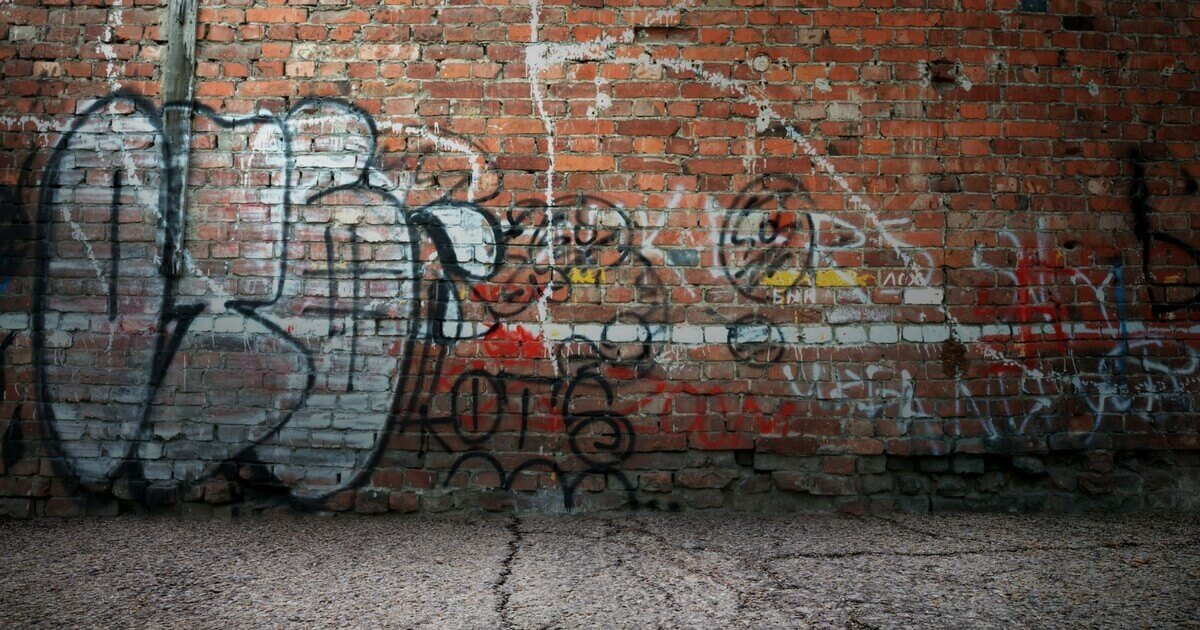The way you refer to graffiti art can often indicate your feeling towards it.
The people that partake in graffiti usually know it as “street art” or graffiti art.
It’s a culture that’s all about painting designated urban walls and adding a splash of colour to otherwise boring locations.
It can give a city its personality and when used correctly, it can look great.
However, there’s another form of graffiti known as tagging.
Tagging is seen as a nuisance and can ruin otherwise gorgeous communities.
Landmarks and cities with random words and un-creative spray painting can be harmful.
THE HISTORY OF GRAFFITI ART
Graffiti itself could be traced back to ancient times.
There have been examples of graffiti in the Roman Empire, Ancient Greece and even Ancient Egypt.
These were done with carvings and other sorts of traditional art tools.
This differs greatly from the modern day usage of marker pens and spray cans.
In many countries of the world, graffiti is seen as a nuisance and a crime.
It is often performed on a property without the owner’s permission.
Graffiti is often times considered a crime of vandalism and defacement.
This can be severely punished in some countries.
This is a far cry from the organised culture of street art.
Permission is given for street artists to paint and design at-will on designated walls or locations.
GRAFFITI & GANG CULTURE
Graffiti and gang culture have always gone hand in hand.
Gang graffiti is a term that refers to the use of graffiti as a tool to mark a gang’s territory.
It is made to intimidate members of other gangs.
This is used to instil fear into a neighbourhood and keep it under their control.
In some cases, graffiti can be used to communicate between gangs to register challenges or as a show of power.
This can often lead to gang-related violence.
Innocent residents are often put through stressful times and violent attacks as a result of these gang-related graffiti wars.
HISTORY OF GRAFFITI ART AS A REBELLIOUS TOOL
Graffiti is also used as a tool for rebellion.
It can be used to express unpopular or underground views of a political nature.
Occasionally it can be linked to anarchist and feminist messages.
The London Underground is often used as a canvas for these political messages because of the foot traffic it receives.
In other countries like Germany, hate graffiti is common in major cities such as Berlin.
Neo-Nazi groups commonly use graffiti to spread hate messages around the city.
There are community efforts to turn this hateful graffiti art into something positive or remove them outright.
GRAFFITI AS ADVERTISING
Graffiti also has a history of being used for advertising purposes.
Sometimes the advertising is subtle and blends into the street art scene.
Other times it’s completely illegal and only used to promote a service.
Illegal advertising and graffiti can often be found on:
- business properties
- social housing
- bridges
- underpasses
- even parks
Local councils have to deal with these nuisances by investing time and money into a graffiti removal company to remove these problems.
It can cost a lot of money in the long-run.
THE NEGATIVE EFFECTS OF GRAFFITI ON THE COMMUNITY
Property owners and business owners suffer heavily when their properties are marked by illegal graffiti.
Cleanup costs are not cheap and if the graffiti is not removed, it can generate a negative image for the business itself.
Graffiti Art can also devalue property because it usually indicates a rough neighbourhood.
The image of the community itself is affected as well.
Although some communities embrace the culture of urban street art.
It’s a huge difference from tagging and hateful or illegal messages being spread around.
Graffiti is a crime and if it is rampant in a community, it could indicate many social problems.
That needs to be resolved before it gets worse.
CONCLUSION
A lot of taxpayer money is wasted on cleaning up Graffiti Art instead of improving the community.
Money is wasted rather than being invested in upgrading schools or tidying up other areas that are in dire need of renovating.
Gang graffiti can often decrease the well-being of community members.
Why?
People live in fear of gang violence that could occur at any moment.
It serves as a reminder that gang activity is high in the area.
While graffiti has a negative impact on communities, when it is performed as street art in designated areas it can have some positive effect.
However, the majority of uses for Graffiti Art are often associated with crime and negative behaviour.
For this reason it is why it is not condoned and should not be supported.

